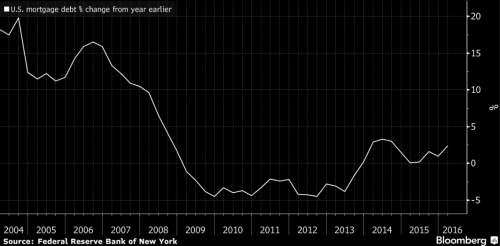The last few months have seen a growing number of climate concerns – from historically devastating floods to record forest fires – with many regions still assessing the damage. Beyond recovery, planning and paying for more resilient infrastructure also remains an enormous challenge, and no quick and easy solutions seem to be on the way from Washington or elsewhere.
One bit of positive news came out recently, though: as the drought in the Western United States has eased, many households are using less water and putting less strain on the country’s scarce water resources. According to a new report from the U.S. Geological Survey (USGS), U.S. household water use is on the decline, approaching levels not seen since the mid-1990s. Steps toward greater water conservation in California and several other states appear to be taking hold, alongside a number of regulatory and technological advances in support of water efficiency, including plumbing fixture upgrades. And with greater efficiency come several benefits: from preserving long-term water supplies to reducing the need to build new infrastructure.
Still, even as households use less water, these drops are not equal nationally, and ongoing challenges remain concerning water efficiency and affordability in many regions.
As our recent report on metropolitan water use highlights, utilities – alongside other local and state leaders – are striving for cleaner, more reliable water service, but they must often do so amidst increasingly unpredictable water demands and mounting infrastructure costs, which results in higher water bills for many households. With more timely and geographically detailed information, however, they can more easily measure and define their water needs – and ultimately design the plans, develop the asset management strategies, and deploy the technologies in support of more efficient and equitable outcomes. The latest USGS report helps clarify what these needs look like at a household level, but now it’s up to local leaders to monitor and address them.
For example, recent national trends only reveal part of the story. U.S. households reduced their water use nationally by almost 850 million gallons each day from 2010 to 2015, a 3 percent decline.[1] This reduction came even as the U.S. as a whole saw its population increase by 12 million people (or 4 percent) over the same time span. Put together, this means that residential water use per capita fell from 88 gallons each day in 2010 to 82 gallons each day in 2015 – a far cry from the 98 gallons each day in 2005.
Many of the country’s most populated metro areas are leading this charge toward more efficient water use. Households in the 100 largest metro areas reduced their water use by 723 million gallons each day from 2010 to 2015 – meaning they were responsible for 85 percent of the U.S. decline, despite accounting for two-thirds of its population. As shown below, five of the 10 metro areas with the greatest declines were found in California, led by Los Angeles (-193 million gallons each day), Riverside (-106 million), and San Francisco (-63 million), all while seeing significant gains in population. Consequently, residential water use per capita in these metros also tended to be below national averages.

Yet, multiple other metro areas actually saw an increase in residential water use. In fact, households in 50 of the 100 largest metro areas used more water each day in 2015 than they did in 2010, revealing clear room for improvement in achieving greater efficiencies. Among the 10 metro areas with the biggest gains, several represent sprawling Sun Belt metros, such as Atlanta (+39 million gallons each day) and Phoenix (+28 million). Not surprisingly, continued population growth and development in many of these markets translated into further rises in residential water use per capita as well.

For the most part, continued declines in household water use show that the U.S. as a whole is making great strides toward more efficient, cost-effective service, but that is not true across the board. On the one hand, some areas are ahead of the curve, particularly in drought-stricken parts of the West where water conservation has not only become a necessity and way of life, but has also benefited from forward-looking planning focused on environmental stewardship and economic stability. On the other hand, some areas along the Colorado River and elsewhere are grappling with rising water demand and challenges collaborating on region-wide planning approaches, including more responsible groundwater management.
Still, even as households use less water, these drops are not equal nationally, and ongoing challenges remain concerning water efficiency and affordability in many regions.
To achieve greater long-term certainty managing their water resources – in addition to planning and paying for any needed infrastructure investments – utilities and their local and state partners should continue monitoring these trends closely. Doing so requires ongoing attention to the infrastructure itself, including technological upgrades and water supplies, but also a prioritization of water’s role in the larger built environment and economic development efforts. Areas with dense, compact development patterns, for instance, tend to use less water, and planning strategies should continue making it easier for all households to gain the affordable water access they need to survive and thrive. The U.S. faces sizable water infrastructure needs, but many areas are already getting a head start on addressing their gaps in this way and should serve as models to consider for future improvements.
For additional interactive data on how households and other users depend on water in metro areas, non-metro areas, and states nationally, visit the recent Brookings water report webpage.
[1] Based on Brookings analysis of aggregated county totals, as reported by the USGS.







Commentary
U.S. households are using less water, but what does that mean for metros and infrastructure?
December 1, 2017